Learning some winter skills
In February 2017 Chris and I ventured up to Scotland to try a new sort of adventure - winter mountaineering.
We signed up for a weekend winter skills course at Glenmore Lodge. I’d done a 5 day mountaineering course at Plas y Brenin the year before (photos still to come), and was interested in what I could do next - both in terms of skills and in pushing my boundaries.
Chris and I are both massively in to hiking and photography, so this seemed like a great way of extending those interests. It was also something of a gamble - would we really like being in bitterly cold and more risky conditions?

Glenmore Lodge ― 2017/02/10
1/11s at f/1.8, 28mm, ISO 100, iPhone 7
When you arrive you’re given an impressive and scary set of tools to look after. These are exciting - but also make it start to hit home that this is a lot more serious than some other outdoor activities you can do.
As we’d come to appreciate through the course, winter mountaineering can be incredibly fun - but also has to be treated with a lot of respect. Done without care it can be incredibly dangerous.
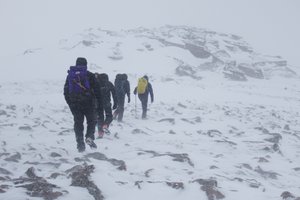
Cairngorm mountain ― 2017/02/11
1/800s at f/6.3, 71mm, ISO 160, Sony RX100m2
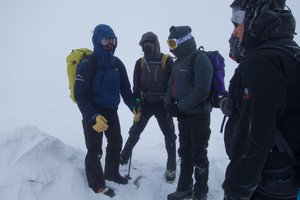
Chris Natt ― Cairngorm mountain ― 2017/02/12
1/800s at f/4.0, 28mm, ISO 160, Sony RX100m2
Other than some of the basics you might expect - crampon use, ice axe arrests, etc - the majority of the course is really about safety. There’s so many things that can go wrong, and it’s so easy to go off course. Much of what our guide talked to us about seemed trivial initially until you realised that if that one thing went wrong you could be in serious trouble.
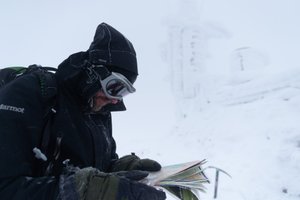
Photo by Chris Natt.
Ed Horsford ― The Cairngorm mountain weather station ― 2017/02/12
1/8000s at f/2.5, 20mm, ISO 200, Nikon D800
We had less than ideal conditions through the course - but perhaps that makes for a good learning opportunity. Much of our second day was spent in near white-out. This was great for practising navigation - and for learning how not to panic when everything around you looks the same.
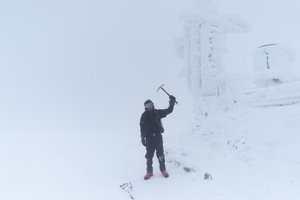
Photo by Chris Natt.
Ed Horsford ― The Cairngorm mountain weather station ― 2017/02/12
1/8000s at f/2.5, 20mm, ISO 200, Nikon D800
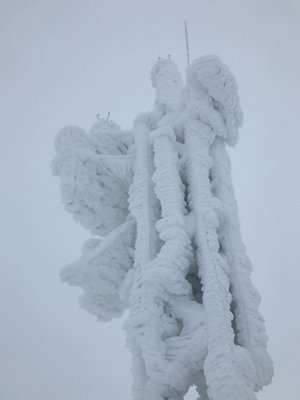
The Cairngorm mountain weather station ― 2017/02/12
1/4600s at f/1.8, 28mm, ISO 20, iPhone 7
We didn’t build this ice hole - but I’d love to come back and do a course on that too. It was so cold and windy outside but remarkably comfy inside.
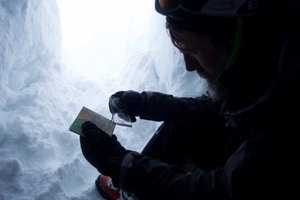
Sheltering from the wind.
Cairngorm mountain ― 2017/02/12
1/160s at f/4.0, 28mm, ISO 160, Sony RX100m2
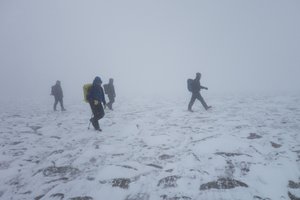
Cairngorm mountain ― 2017/02/12
1/800s at f/6.3, 28mm, ISO 160, Sony RX100m2
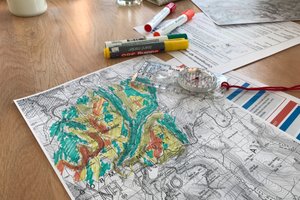
Learning to estimate likely avalanche-prone areas.
Glenmore Lodge ― 2017/02/12
1/100s at f/1.8, 28mm, ISO 25, iPhone 7
I’d never really considered that avalanches would be a thing in the UK. Nor that avalanche prone areas might change each day - one day a slope might be safe, and the next it could be very risky. I now know they’re a massive part of winter mountaineering. Even four winter trips later I still feel this is an area where I’ve got lots to learn.
If anyone were thinking of doing some winter mountaineering I’d wholeheartedly recommend doing one of these courses. Even if you’ve used crampons and axes a bit (glacier trek maybe?) - there’s so much more you pick up on the course - navigation, avalanche awareness, etc.